11 Most Worshipped Ancient Mesopotamian Gods
With a vast range of gods and goddesses, thousands of minor deities, and a multitude of legends and myths, the Mesopotamian religion is extremely rich and entertaining.
This religion is impressively ancient and began in the fourth millennium BC when the people living in this area, such as the Sumerians, the Akkadians, the Babylonians, and the Assyrians, started to worship the natural forces.
Later on, in the third millennium BC, these forces became personified and this is how gods and goddesses such as Anu, Utu, and Inanna began to be venerated all over Mesopotamia.
According to the Mesopotamian religion, after death, every human, regardless of his or her social status and lifestyle on Earth, reached the Irkallu, literally, ‘the Great Below’. This place was located below our world and, following Mesopotamian beliefs, dead people wandered here for eternity in the form of weak and powerless ghosts.
But why such a pessimistic view? At the time, people believed that true everlasting life was reserved only for the gods and that even though humans lived forever, they could not maintain their strength, power, and happiness.
But who were the most worshiped Mesopotamian gods? Let’s find out!
1. Anu
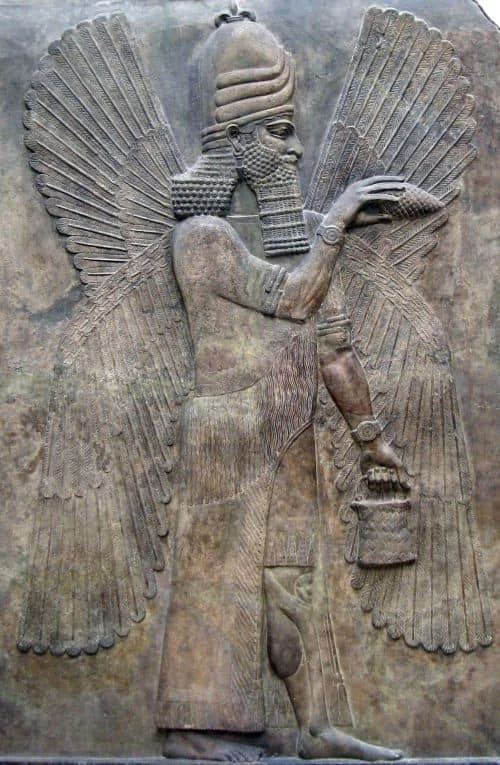
Anu was considered the highest god in the Mesopotamian pantheon. Often referred to as the ‘Father of all the Gods’, he was not only the progenitor of all deities but also of all demons and spirits alike.
Anu lived in the third and highest level of heaven, which according to the Mesopotamian myths, was made of a reddish stone known as luludānitu.
He was mainly a passive god and was considered the source of divine and human kingship. In some legends, Anu was also credited for the creation of the universe together with other deities such as Enlil and Ea.
His cult center was the city of Uruk, even though a number of temples and shrines were built all over Mesopotamia to worship him.
We don’t know exactly when this god was first introduced in Mesopotamia, but some data suggest that his cult started in the mid-3rd millennium BC.
From the 2nd millennium BC onwards Anu became widely known as its name frequently appears in a number of literary texts and inscriptions from this period.
2. Enlil
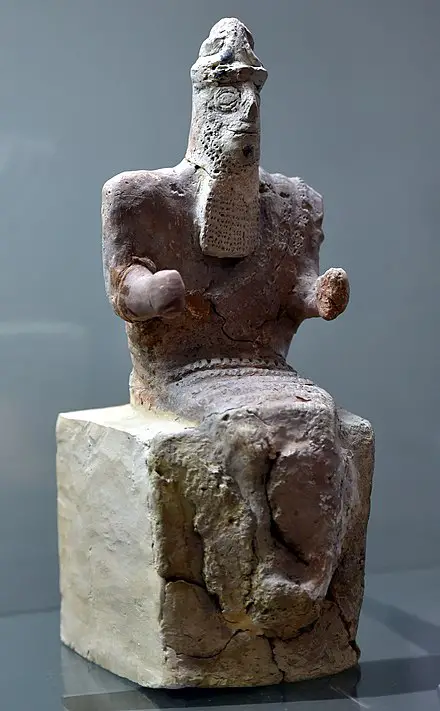
Even though Anu was regarded as the highest deity and father of all gods, Enlil was somehow more important to the Mesopotamian people.
His main cult center was Nippur, an ancient Sumerian city located in today’s southeastern Iraq, even though, just like Anu, he was worshiped over a vast area covering all of Mesopotamia.
Enlil, literally meaning ‘Lord Wind’, was the god of the atmosphere. People in Mesopotamia believed that every form of wind, from violent storms to fresh summer breezes, originated from his breath. This deity was also considered the embodiment of energy, authority, and force.
Enlil was also the protector of agriculture. In fact, The Myth of the Creation of the Hoe narrates the story of how this god separated heaven from Earth, making room for seeds to grow.
After dividing these two realities, Enlil also invented the hoe. With this tool, he proceeded to break the hard crust of the Earth from which humans emerged.
3. Enki
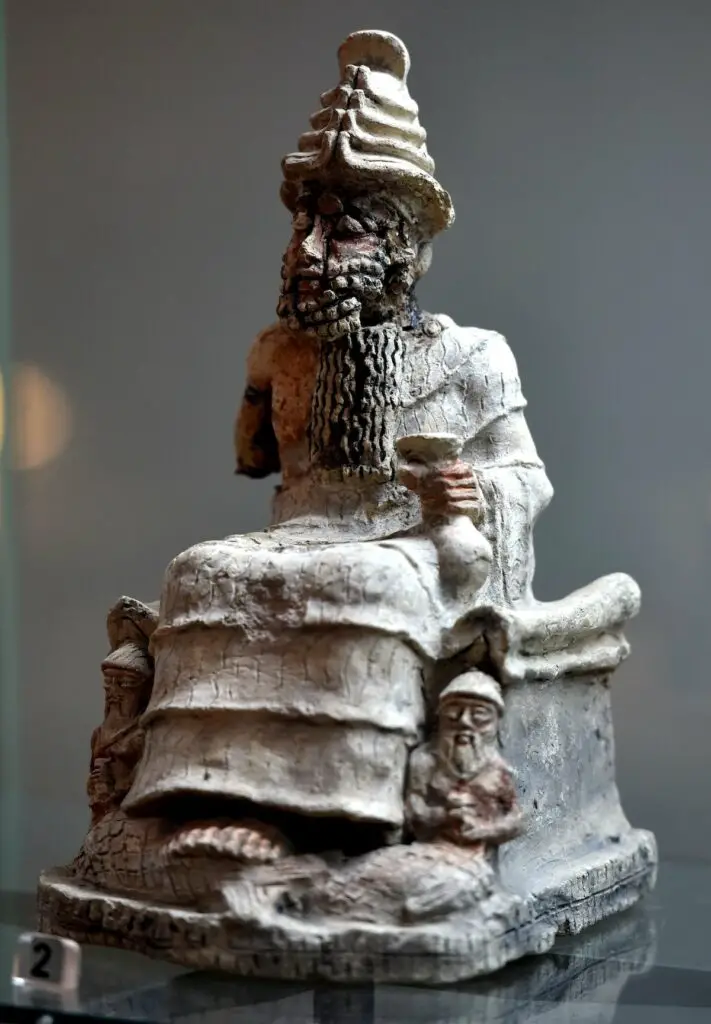
Water in Mesopotamia was often considered a blessing in all its forms. Most of the territories in this area were, in fact, covered by a vast desert and characterized by a semi-arid climate.
It goes without saying that Enki, the god of water, crats, fertility, and creation, was one of the most worshiped in the Mesopotamian pantheon.
It may seem weird at first, but Enlil was not considered the only creator of the Earth. In fact, Enki is also the protagonist of several legends concerning the creation of the world and humanity, such as Enki and Ninhursag and Enki and Ninmah.
Initially, Enki used to be only worshiped in the city of Eridu, one of the oldest settlements in southern Mesopotamia. However, from here, the cult soon spread to neighboring lands making this deity popular all over Mesopotamia.
Enki’s symbols were the goat and fish, and his main temple was known as E-abzum, the first to be built in Southern Iraq, according to local legends.
4. Utu
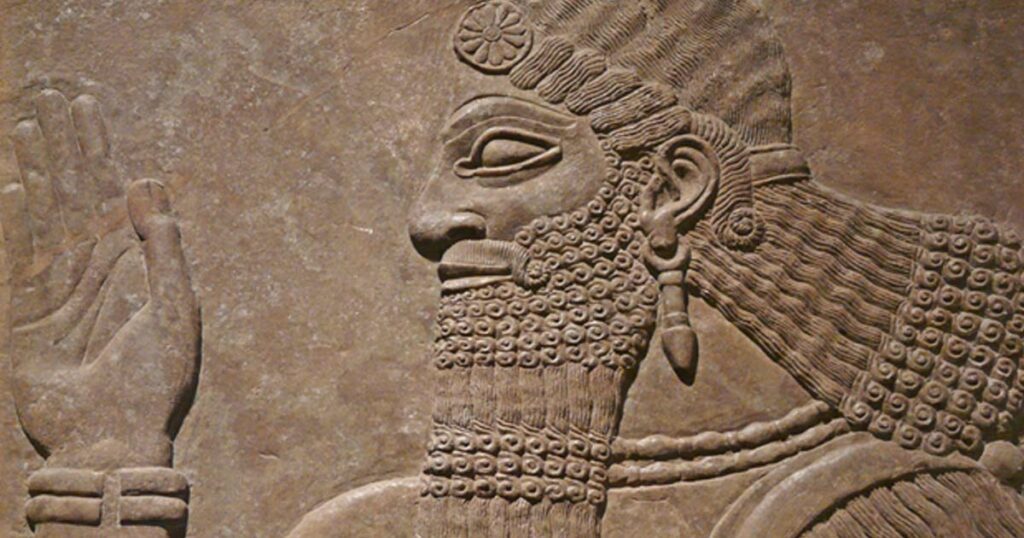
Particularly venerated in Sippar and Larsa, Utu was considered the god of the sun, just like Apollo for the Greeks.
People in Mesopotamia believed Utu could see everything and everyone from his advantaged position on the solar chariot pulled by four equines. For this reason, he was regarded as the protector of travelers and was responsible for justice on Earth.
Utu was the son of the moon god Nanna and his wife Ningal and, in some legends, he also had a twin sister known as Inanna.
This deity was married to Aya, the goddess of dawn and there are several legends narrating the moment during the day during which the two lovers would reunite. This would always happen on the top of a sacred mountain when the sun was about to set.
5. Nanna
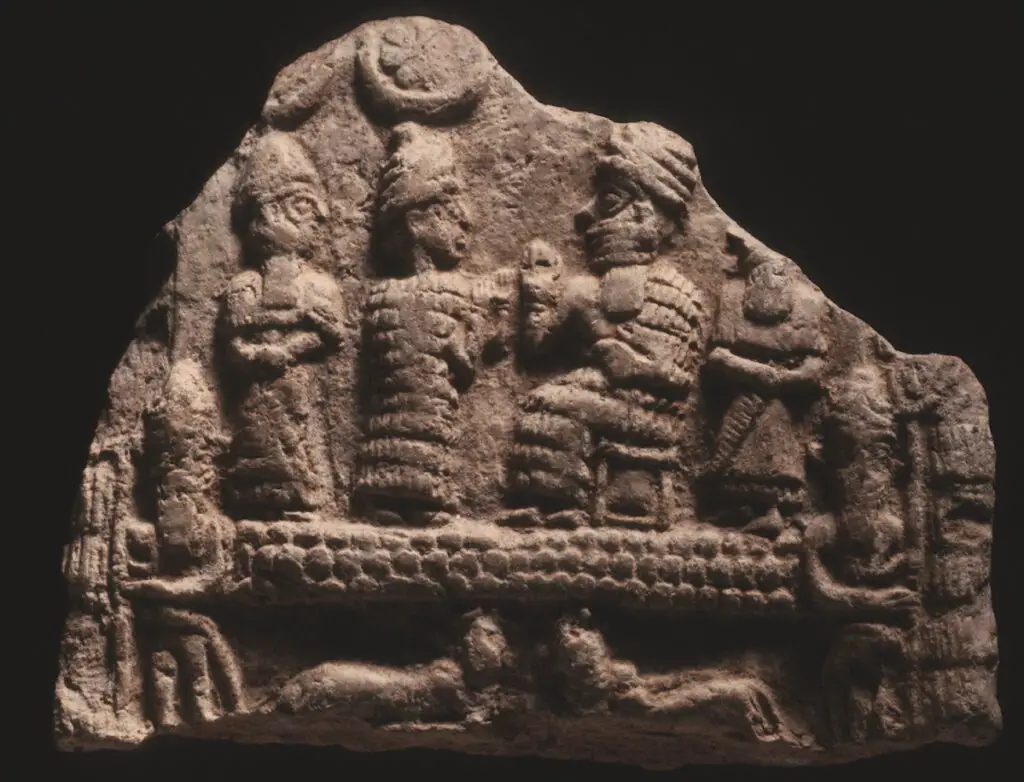
Nanna was the god of the moon and wisdom as well as the mother of Utu, the god of the sun. It may seem weird at first for the sun to be born by the moon and not vice versa, but historians have an explanation for this.
According to scholars, the moon played a more fundamental role than the sun in the early days of a hunter-gatherer society. This was because this celestial body was used as a calendar and was therefore essential for these populations.
The first data regarding Nanna dates back to 3500 BC, and this deity is, in fact, one of the first to appear in the Mesopotamian pantheon. His cult center was in the great temple at Ur, located in today’s south Iraq.
Nanna was born from Enlil and Ninlil and was married to a fertility goddess known as Ningal. Apart from Utu and Inanna, the couple had two other sons, Ereshkigal, the queen of the dead, and Ishkur, the god of storms.
6. Marduk
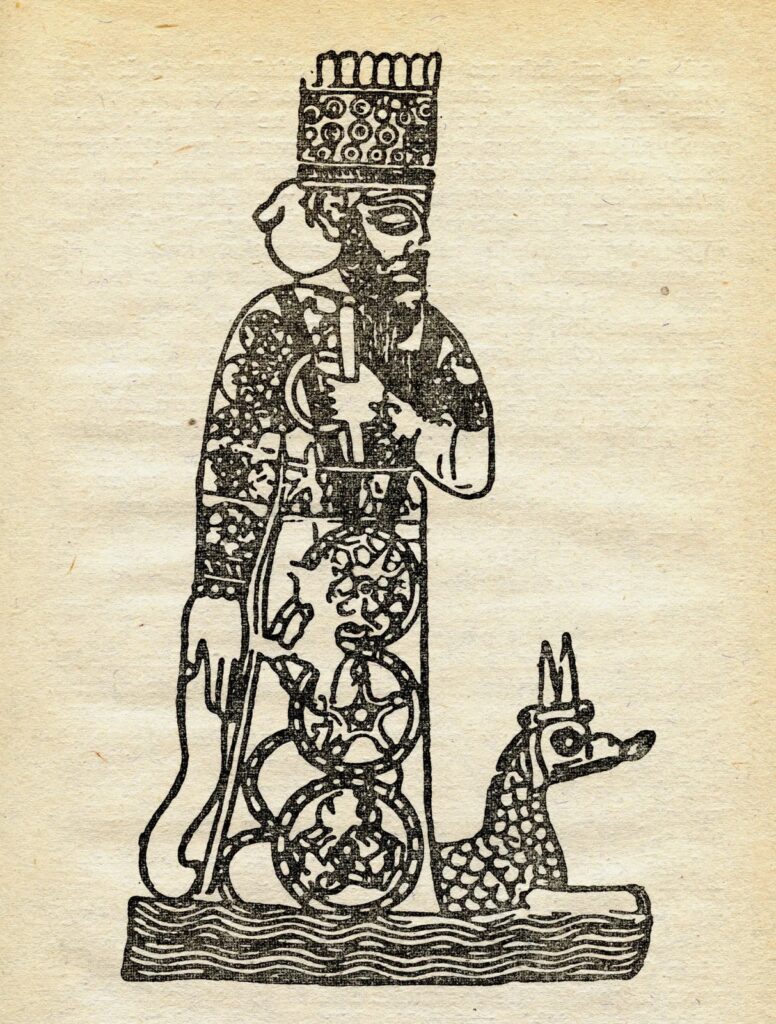
Marduk was the patron deity of Babylon city and was considered the god of justice, compassion, healing, regeneration, magic, and fairness. He was worshiped all over the city and, in particular, in the temple of Esagila.
The popularity of this god reached its apex in the 18th century when Babylon city became the political center of the Euphrates valley.
Marduk is often associated with the divine wind weapon known as imhullu and was sometimes represented next to his servant, a dragon known as Mušḫuššu.
7. Nabu

Nabu was the god of literacy, rational arts, scribes, and wisdom. His role was to inscribe the fates assigned to each man on Earth.
Even though at first he was not too popular among the Babylonian populations, he gained popularity in the first millennium BC when he was identified as the son of the god Marduk.
Nabu was particularly worshiped in Borsippa, and every New Year, his statue was brought to Babylon city, Marduk’s main cult center, so that he could pay respect to his father. Nabu’s symbols were the stylus resting on a tablet and a wedge shape.
He was represented with his hands clasped, wearing a horned cup. Nabu often rode the dragon Mušḫuššu, which used to belong to his father.
8. Nergal
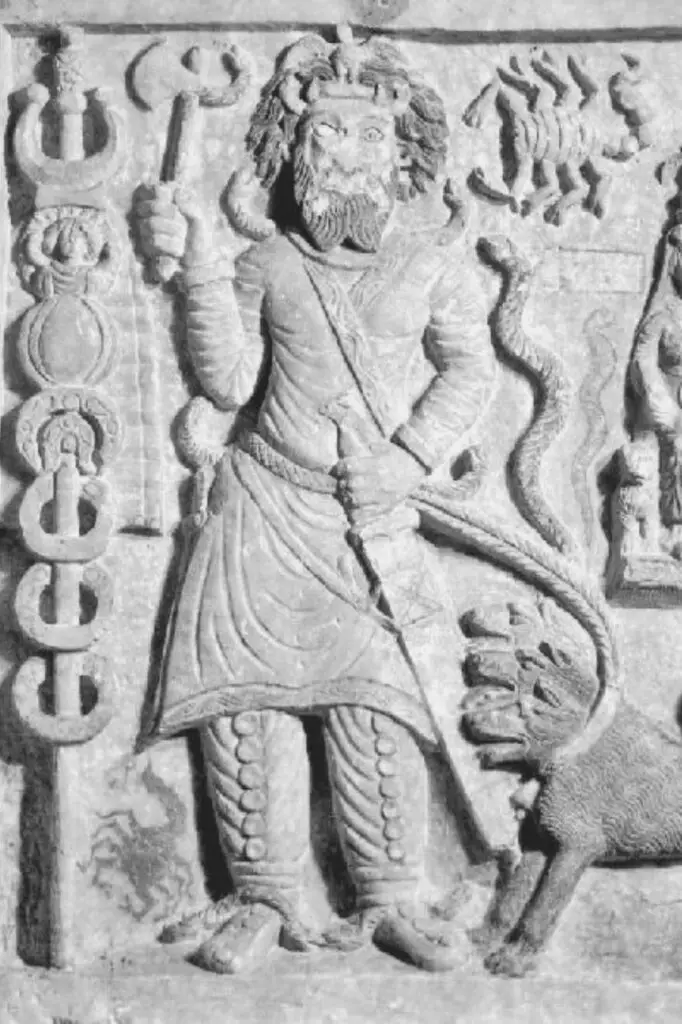
Nergal was the god of war, death, and diseases and, together with Kur, reigned over the underworld.
Even though he was initially only worshiped in the north of Mesopotamia, his cult soon extended to the south too. His primary cult center was Kutha, a city located in today’s Iraq.
Nergal was often represented with several weapons such as the dagger, the bow, and a peculiar mace adorned by three lion-shaped heads.
He was often portrayed with a scimitar with leonine decorations. Nergal also wore a type of flat hat common to most of the deities in the underworld.
9. Inanna
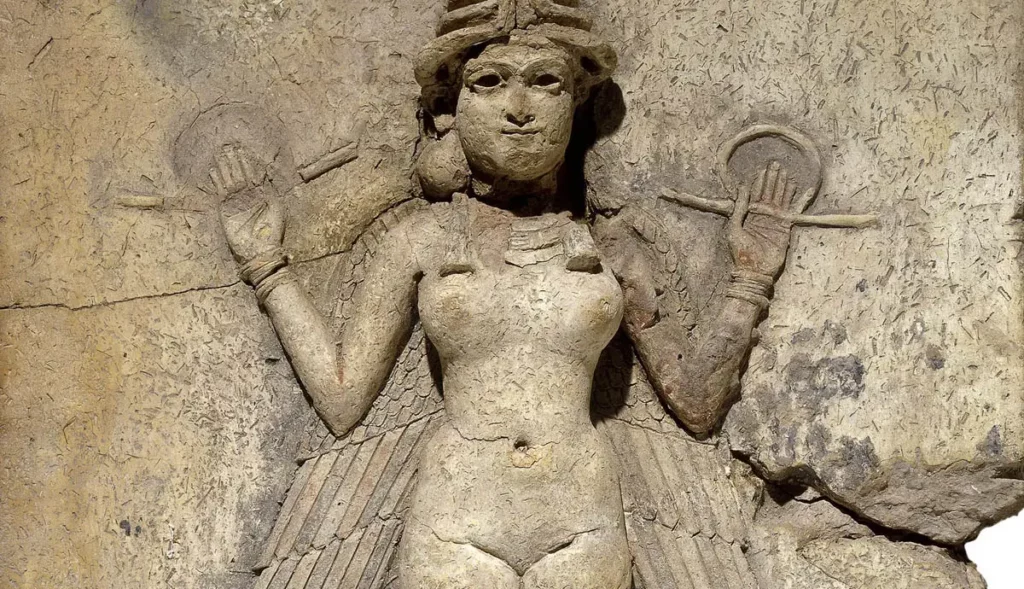
Goddess of love, beauty, justice, and political power, Inanna was among the most worshiped deities in Mesopotamia. Also known as ‘The Queen of Heaven’, she was the patron goddess of the Eanna temple in Uruk.
Inanna was particularly venerated by the Assyrians, who considered her the highest deity in their pantheon.
Inanna’s symbols were the lion and the eight-pointed star. Along with her brother Utu, she was the goddess of justice, in fact, many myths had her as the protagonist avenging wrongdoings.
She was known for having destroyed Mount Ebih after it challenged her authority and for punishing Shukaletuda, a gardener who dared to rape her while she was asleep.
10. Hadad
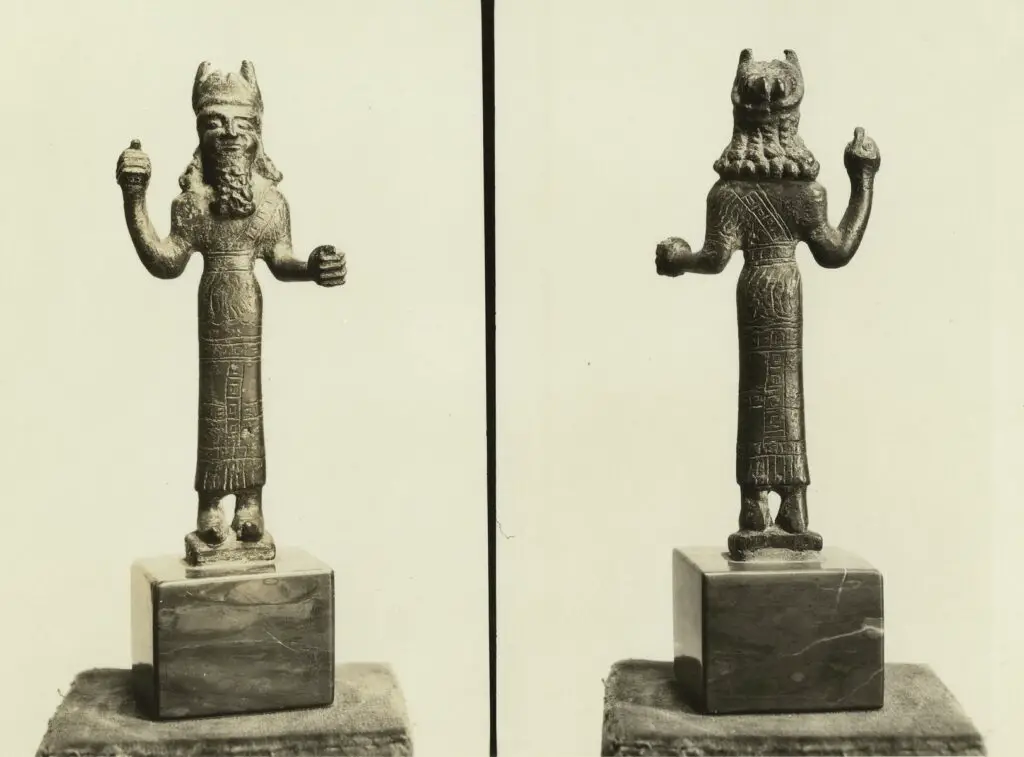
Hadad, the god of storm and rain, was known for his double nature. He could, in fact, bring destruction and misery with his storms, but also give life back through his torrential rain, a powerful element in the dry Mesopotamian lands.
Hadad was often represented with a long beard while holding a club and a thunderbolt. Most of what we know about this god comes from the Baal Cycle, a collection of stories with Hadad as the protagonist.
These stories were found in today’s Syria and date back to 1400 to 1200 BC.
11. Dagon
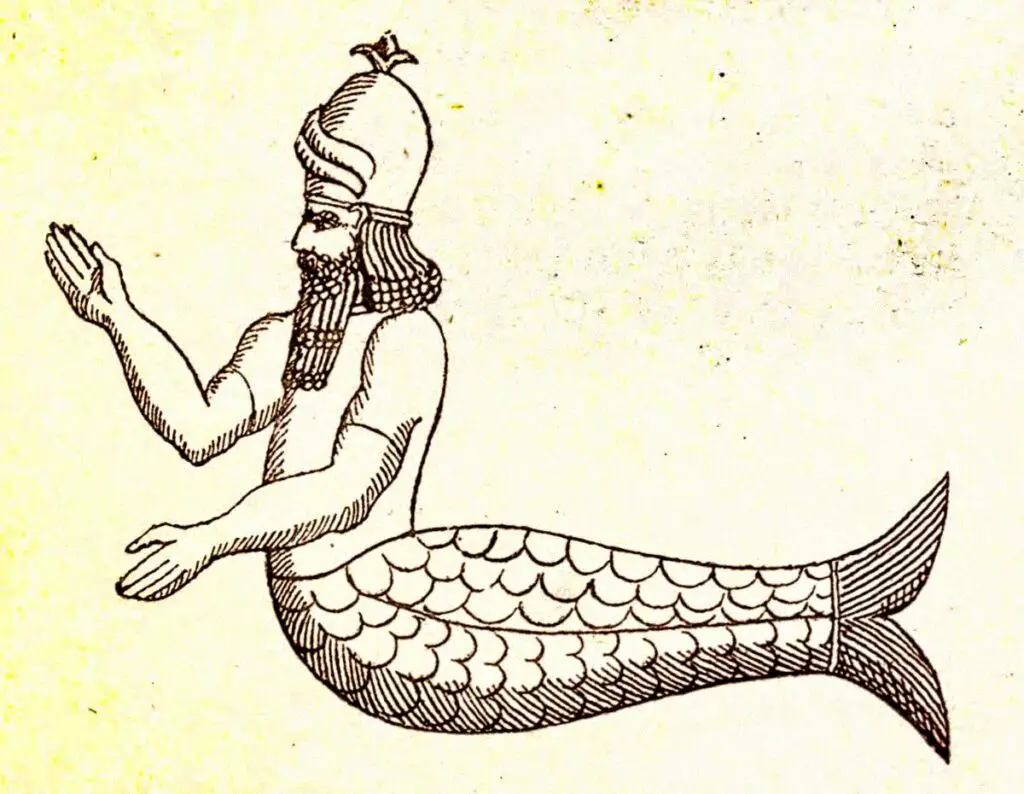
The last god on our list is Dagon, the Lord of the Land, often associated with prosperity.
Not by chance, the word ‘dagon’ means ‘grain’ in Hebrew. His cult center was in Tuttul, a city that used to be located in today’s north Syria. However, he was also worshiped in Terqa, Mari, and Emar.
Dagon was the father of Hada and had a wife known as Shalash.
Conclusion
Unfortunately, the Mesoptamain religion was bound to end. In fact, from the first century BC, Christianity spread all over the region, and most populations inhabiting these areas converted to it.
But this doesn’t mean that Mesopotamian gods and goddesses disappeared altogether. In fact, this set of beliefs has influenced many other religions in the world ranging from the famous Greek mythology to the Canaanite religion and the Aramean one.
Some recent religions, which emerged in the 20th and 21st centuries, such as a few strains of neopaganism, also adopted some of the Mesopotamian gods. This means that even nowadays, some people around the world still worship these amazing deities!
Even though less popular than two thousand years ago, Anu, Enlil and all the other gods and goddesses of this fantastic pantheon have not been forgotten and they probably won’t any time soon!
How to Cite this Article
1. To cite this article in an academic-style article or paper, use:
Cristina Miceli, “11 Most Worshipped Ancient Mesopotamian Gods”, History Hippo, July 2, 2022, https://historyhippo.com/most-worshipped-mesopotamian-gods/. Accessed April 9, 2024
2. To link to this article in the text of an online publication, please use this URL: https://historyhippo.com/most-worshipped-mesopotamian-gods/
3. If your web page requires an HTML link, please insert this code:
<a href=”https://historyhippo.com/most-worshipped-mesopotamian-gods/”>11 Most Worshipped Ancient Mesopotamian Gods</a>
